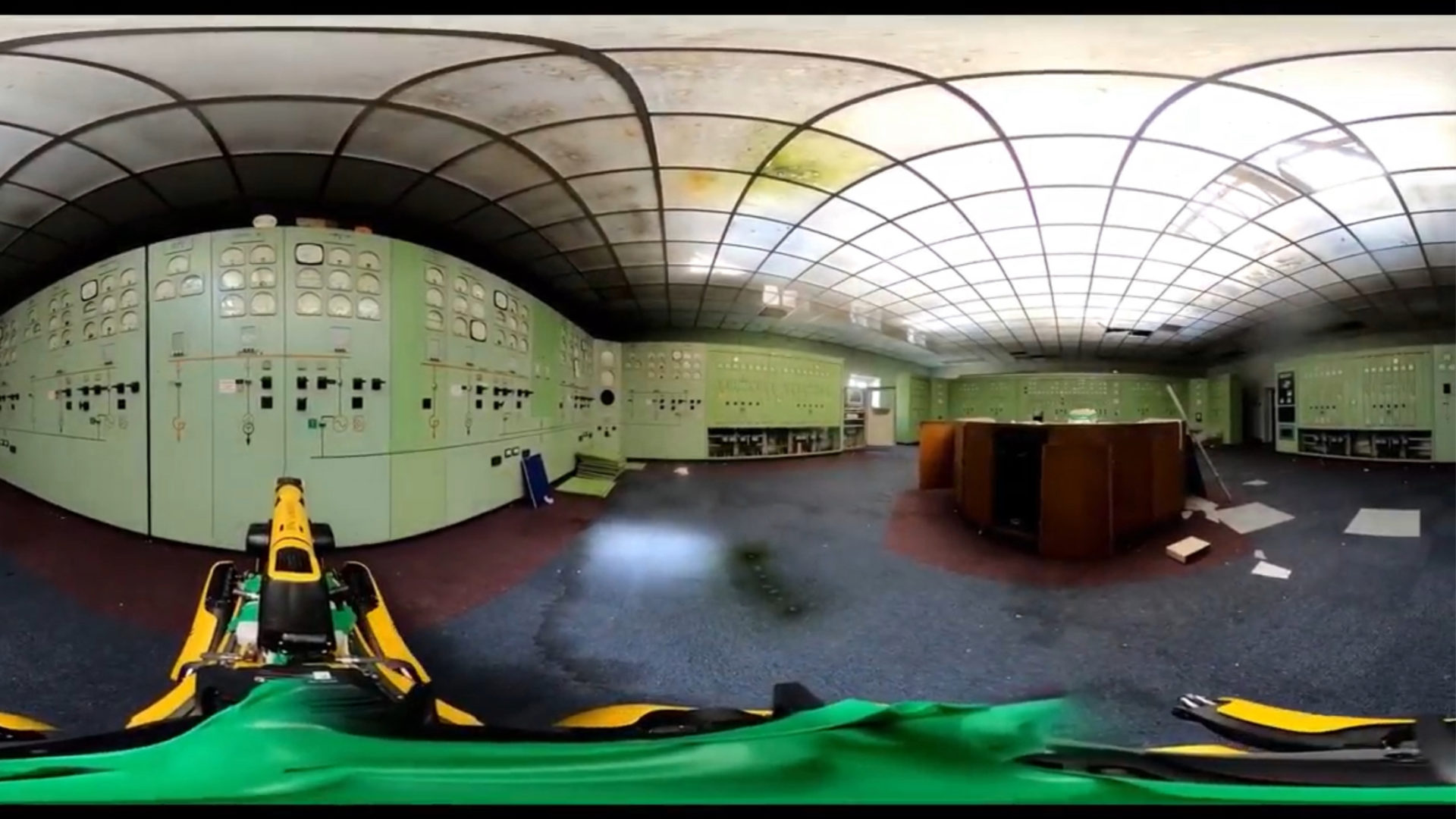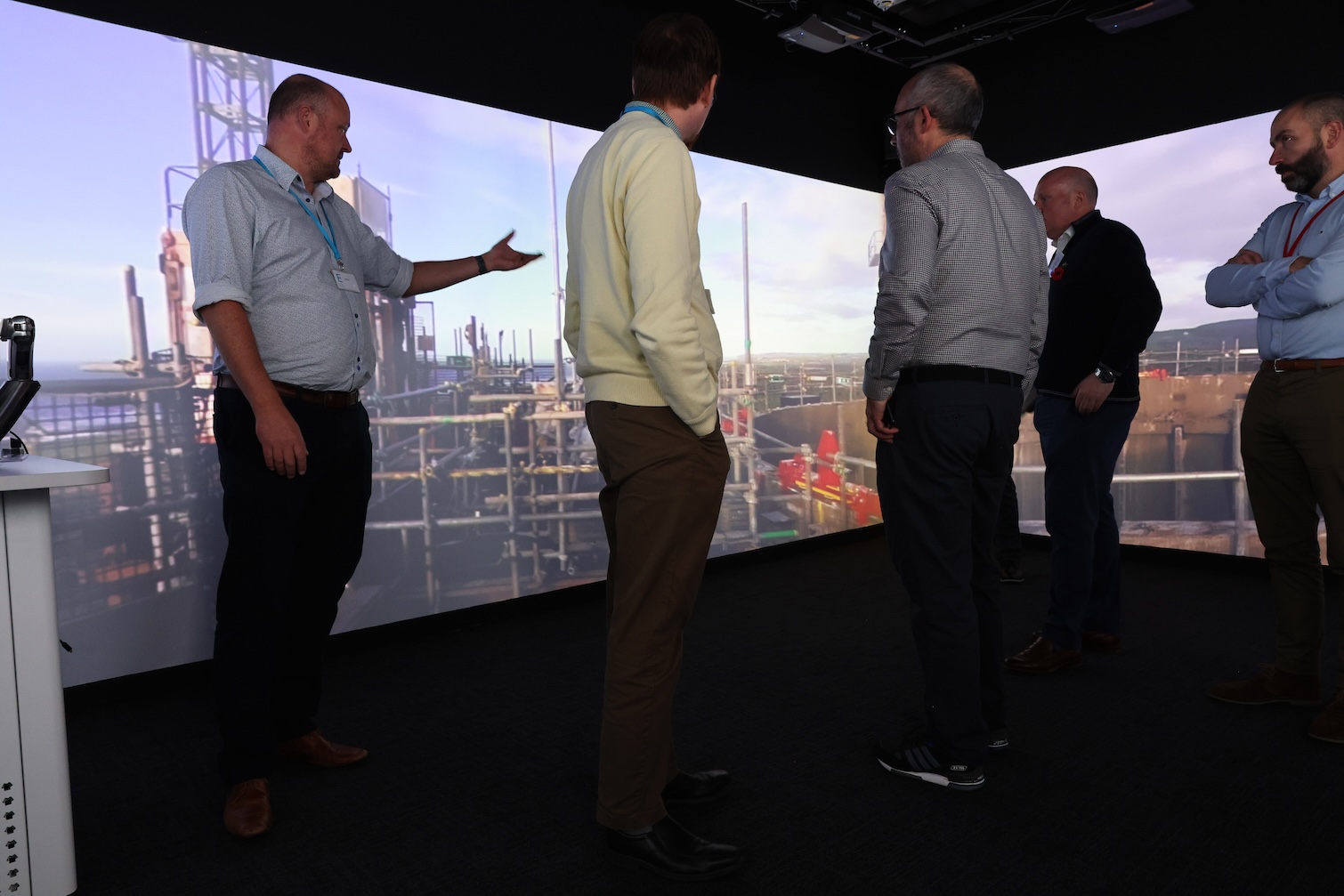
Spot the dog, VR, AR and immersive rooms are all being deployed by AtkinsRéalis in its Virtual Site Access initiative that is helping to make the huge programme of work in the nuclear sector safer and more cost-efficient.
AtkinsRéalis’s Virtual Site Access uses various monitoring techniques and surveys of all types of nuclear facilities – operational, under construction and those being decommissioned – to enable the remote planning, analysis and management of nuclear facilities across the lifecycle.
In doing so, it reduces risks, is more efficient, saves carbon and saves money. Between March 2023 and February 2024, using these remote services saved 20,118 hours of travel, an estimated £1.2m in costs (based on agreed client metrics), and 296,585kg of CO2, while substantially reducing personnel radiation exposure.
The suite of technology that makes up the Virtual Site Access has been developed by AtkinsRéalis as part of its Digital in Nuclear vision. This is a strategy that harnesses digital technology to provide a comprehensive remote service to the sector, saving people from having to travel to site and work in harsh conditions. Virtual Site Access won Best Application of Technology at the Digital Construction Awards in July.
Decommissioning challenges

“Decommissioning is a good sandbox because of the challenges. Sites like Sellafield are so varied and broad that there’s really a strong pull for innovation, technology and robotics.”
The digital service includes cutting-edge technologies such as Boston Dynamics’ Spot the robot dog (and other quadrupedal robots), VR (harnessing Microsoft HoloLens 2) and Igloo Vision immersive spaces. This package of technologies has been masterminded by Darren Grears, director and head of digital, nuclear and power for EMEA at AtkinsRéalis. He started as an apprentice in the company’s nuclear business, 23 years ago.
“I have a decommissioning background working at Sellafield, and decommissioning is a good sandbox because of the challenges. Sites like Sellafield are so varied and broad that there’s really a strong pull for innovation, technology and robotics,” he says.
The under-construction Hinkley Point C is predicted to come online before the end of the decade, while construction and commissioning of Sizewell C is expected in the mid-2030s – and Grears’ team is working on both. Meanwhile, eight more nuclear reactors are due to go offline by the end of the decade, joining the 36 reactors already being overseen by the Nuclear Decommissioning Authority. The workload in the sector is enormous and the demand for AtkinsRéalis’s services has grown rapidly.
“When we started the Virtual Site Access service in 2021, there were just four of us working full-time on digital. Now there are close to 50,” Grears says.
BIMplus: What is the thinking behind Virtual Site Access?
Darren Grears: In the nuclear industry, sites are predominantly situated away from areas of high population and therefore lack effective transport links. When combined with the necessary security restrictions (training, clearance), it makes accessing these sites difficult. Added to these site access issues are the inherent risks of the nature of the sites, both conventional and radiological.
Furthermore, data security and information assurance restrict people from being able to visualise the site. Being able to virtually access the site remotely through the web removes all these limitations and restrictions.
Can you give an example?
We are providing services to assist and prolong the running of nuclear plants that have their lifespan extended – to maintain energy security while new generation capacity is being built.
Extending the life of operational plants is key. One of the ways we’re using Virtual Site Access is by deploying technology to collect site information about a plant, enabling the generation of 3D models of the current plant configuration. Drawings generated when plants were built rarely reflect the current configuration. For example, it might be there has subsequently been a change of configuration where a walkway is no longer accessible.
What is the most cutting-edge technology you are deploying?
One is deploying Boston Dynamics’ quadrupedal robot, Spot, which acts as a platform on which to mount a load of sensors to collect information more autonomously to assist decommissioning activity. Spot was deployed to reduce risk in decommissioning at Calder Hall in Sellafield, which was the world’s first full-scale commercial nuclear power station.
When built in the 1950s, materials included what we now know to be dangerous, primarily asbestos, so it is far less risky to survey the building remotely. The team used Spot to carry out a building inspection remotely while streaming the visuals live to a project team in an offsite location. The team were able to communicate with Spot’s operators in real-time for a bespoke inspection. The building was classified as ‘no person entry’, so the team de-risked that whole operation by remotely controlling Spot to complete the walk around the building, doing a virtual tour of the facility.
This inspection allowed the project to progress on what could have previously been a stalled task.

Tell us more about your immersive rooms.
This is a leading-edge investment, and we have now built three immersive rooms in the UK, with another three coming online globally by the end of this year.
Immersive rooms are 360° projection rooms (like ‘BIM caves’ in traditional speak). We’re installing them in key locations across our UK offices. We link them to our Virtual Site Access initiative to allow users to have group interaction with data, as well as viewing it through VR.
Rather than physically having to go to site, we can bring people to the site by entering the immersive room. We can load project data and then have a 360° view of the information that’s being collected.
Immersive rooms can be used to virtually access sites for training, for inductions, and to avoid having to physically be present to plan an activity. And when you do physically have to go to site, the immersive room can show in advance what the site is going to be like.
“Rather than physically having to go to site, we have the ability to bring people to the site by entering the immersive room; you can load project data and then have a 360° view of the information that’s being collected.”
Are there other applications outside nuclear?
We are using it to survey other power and network infrastructure like plants and substations. But it can be used on any asset that requires inspection or further analysis. One area where we could see greater demand is in the rail sector to reduce risks and find safer ways to conduct surveys and tasks.
How might the technology continue to develop?
At the moment, we still need to physically be on site to deploy the technology that forms part of Virtual Site Access, although it can still operate beyond visual line of sight. We’re working now towards this being fully autonomous and controlled from miles away. So, we would station Spot in a ‘kennel’ on a site permanently and then deploy it to carry out autonomous data collections regularly.
We also want to explore how we can use machine learning to analyse the data we’ve collected to identify risks. We can use generative AI to start asking questions of it.
Should people be worried robots might start taking their jobs?
It’s not about replacing people, it’s more about succeeding in a very competitive market and overcoming future skills gaps: that’s where the robotics comes in.
We also need to attract people like gamers, who do not necessarily associate construction with the cutting edge of digital technologies; we need data scientists and we need software engineers. As many who have worked in nuclear for their entire careers are now retiring, we also need to train and pass on their knowledge to a younger generation of workers, so that experience and understanding of site and conditions is not lost.
We really do need those with an interest in graphic design and visualisation, because how we present information is key to the future of our industry.
Speaking personally, what got me into the engineering sector was that I wanted to be a graphic designer. I just didn’t know I could apply it to the engineering sector, but once I did, I realised there was an enormous opportunity there.
We’ve started to recruit people from different areas and we’re trying different tactics like holding a hackathon to reach people who wouldn’t have otherwise considered this as a careers field and help get our name out there as a company scaling up its technology teams. We hope it will bring in creative people with ideas that we will look to support and invest in.
Don’t miss out on BIM and digital construction news: sign up to receive the BIMplus newsletter.












